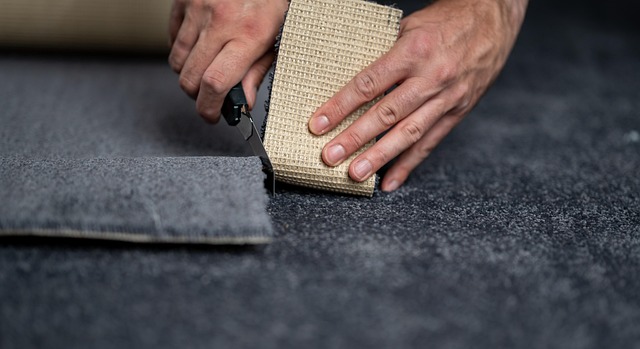Sizing guides and templates for custom-fit mesh installations
Accurate sizing and clear templates make custom-fit mesh installations simpler and more reliable for home and travel use. This article summarizes practical measurement techniques, fabric and screen choices, and step-by-step template tips so you can create a tailored insect barrier that balances protection and ventilation across windows, doors, beds, and portable setups.

Custom-fit mesh installations require careful measurement and practical templates to ensure reliable insect protection while preserving airflow and comfort. This article describes measurement strategies, fabric and mesh selection, template creation, installation basics, portable options for travel and sleep, and routine maintenance and repair advice. The focus is on straightforward methods you can apply at home or with local services to achieve a secure, well-ventilated screen without guessing sizes.
This article is for informational purposes only and should not be considered medical advice. Please consult a qualified healthcare professional for personalized guidance and treatment.
How to measure for custom insect mesh installations
Begin by identifying the opening type: window, door, bed frame, or vehicle hatch. Use a steel tape measure and record three measurements for each dimension where applicable: width (left-to-right), height (top-to-bottom), and depth or frame overlap. For windows and doors, measure the inside and outside jambs and note any obstructions such as handles, hinges, or trim. Add a consistent allowance for overlaps—typically 20–40 mm depending on attachment method—so the mesh can be secured without gaps. Label each measurement and transfer them to your template drawing before cutting.
Choosing fabric, mesh, and screen types
Select a mesh fabric based on insect size, durability, and ventilation needs. For general insect protection, 18×16 polyester or fiberglass mesh works well; for smaller pests such as no-see-ums, consider finer mesh counts. Synthetic fabrics resist mildew and hold shape better for portable use, while metal screens offer long-term durability for permanent installations. Consider screen color too: darker meshes reduce glare and improve visibility inward, while lighter meshes can brighten interiors. Match the mesh weight to the installation type—lightweight for travel, heavier and reinforced for doors.
Ensuring protection, ventilation, and safety
A good custom-fit installation balances protection and airflow. Mesh density affects ventilation: higher thread counts improve exclusion of tiny insects but reduce airflow slightly. For sleeping areas, prioritize breathable fabric that still blocks bites; for doors, combine reinforced mesh with a magnetic or zip closure to maintain safety and convenience. Check that frames and fasteners are secure to avoid loose edges where insects can enter. For households with children or pets, use closures without small parts that can detach and ensure anchors are flush with walkways to prevent trips.
Templates and portable designs for travel and sleep
Create simple paper or cardboard templates before cutting fabric; trace the measured outline and mark fastening points, overlaps, and cut-outs for handles or zippers. For portable sleep nets, design rectangular or pyramid profiles with reinforced corners and attachment loops. Templates speed repeat builds and reduce fabric waste. Use lightweight fabrics with sewn-in channels for poles if you plan tent-style setups. For travel, pack a compact repair kit (needle, thread, fabric patches, and small Velcro strips) and consider modular panels that can be swapped out for different openings.
Installation steps and repair tips for maintenance
Start by prepping the frame: clean surfaces, remove loose paint, and repair splinters. Position the mesh tautly and fix with the chosen method—staples, spline in an aluminum frame, hook-and-loop tape, or adhesive-backed trim. Trim excess with sharp scissors and secure corners with reinforcement patches. For repairs, patch small holes using adhesive fabric tape or sew a small piece of matching mesh over the breach; larger damage may require replacing a panel. Regular maintenance includes checking fastenings, cleaning mesh with mild soapy water, and retreating wooden frames to prevent rot.
| Provider Name | Services Offered | Key Features/Benefits |
|---|---|---|
| Home Depot | Window and door screen materials, spline tools, DIY supplies | Wide selection of mesh, frames, and hardware; in-store cutting services |
| Lowe’s | Screen repair kits, frames, installation materials | Comparable retail selection with how-to resources and local pickup |
| Amazon | Mesh fabrics, portable nets, repair kits | Large online selection for travel nets and specialty meshes; delivery options |
| Etsy | Custom-made mesh panels and handcrafted sleep nets | Independent sellers offering bespoke sizes and textile choices |
| Local curtain or upholstery shop in your area | Custom cutting, sewing, and installation support | Personalized measurement and sewing services; can handle nonstandard frames |
Common measurement errors and when to seek local services
Frequent mistakes include measuring only the visible opening (not jambs), neglecting hardware clearances, and failing to label measurements properly. If the frame is warped, irregular, or part of a historic structure, consider consulting local services that specialize in custom screens or upholstery. Retailers and local curtain shops can verify measurements, offer cutting services, or fabricate complete frames when DIY is impractical. Using a professional for complex openings reduces rework and helps ensure a tight-fitting, durable screen.
Conclusion
Accurate measurement, careful template creation, and appropriate fabric selection are the core steps for successful custom-fit mesh installations. Whether you are creating a permanent door screen, a bedroom sleep net, or a portable travel barrier, following standardized measurement practices and using clear templates reduces waste and improves protection while maintaining ventilation and safety. Regular inspection and straightforward repair methods will prolong functionality and help the mesh continue to perform as intended.






